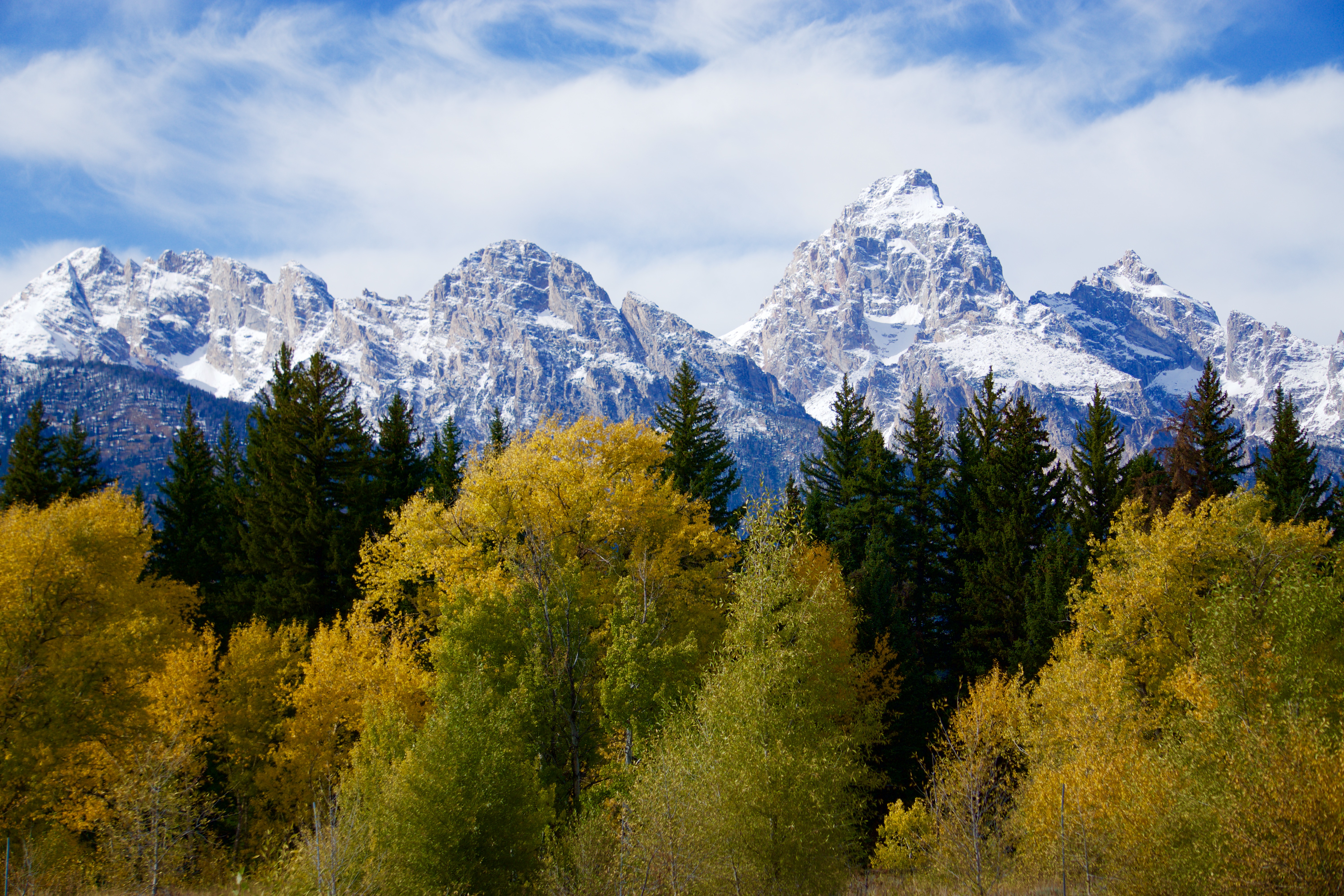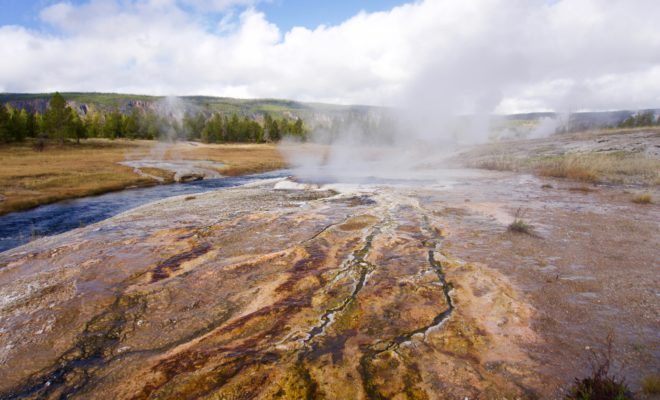Article By Korey Peterson
Cruising up highway 191 toward Yellowstone, I’ve got the heat cranked to fend the early morning chill. The Tetons are illuminated on my left by the sun just beginning to peek over the Bridger-Teton National Forest. I would be flying down the road if time was my concern, but with no sign of another car to be found, I’m more interested in taking in the scenery. Not seeing another car in Grand Teton National Park is a rare thing during the summer when most people make their pilgrimage, but it’s October, and the road is wide open in front of me.
 An hour into my trip I pulled into the parking lot at Old Faithful and grabbed a prime spot; no lines, no waiting, no circling the parking lot for hours, and no sprinting across the parking lot, through the visitor center to make it in time to see Old Faithful erupt because the only parking spot was a quarter mile away.
An hour into my trip I pulled into the parking lot at Old Faithful and grabbed a prime spot; no lines, no waiting, no circling the parking lot for hours, and no sprinting across the parking lot, through the visitor center to make it in time to see Old Faithful erupt because the only parking spot was a quarter mile away.
I love the national parks, Grand Teton and Yellowstone are undoubtedly near the top of my list, but if you’ve ever visited during peak season, you’re probably aware that a whole lot of other people feel the same way. For everything these parks have to offer, it can be a bit hard to enjoy nature’s beauty when it feels like every parking lot and trailhead is a traffic jam, and you have to fight for your turn at the scenic overlooks. So when I had the chance to spend time in these parks in early October of 2017, I found out visiting Yellowstone and the Tetons in the off-season is definitely the way to go.
After seeing Old Faithful erupt, I took off around the rest of the upper geyser basin and found the boardwalks and trails mercifully empty. No peering around a throng of foreign tourists to see geysers, no trading places with families on vacation at the scenic overlooks.
It’s all mine.
No crowds, no hassle.
The next morning, I woke up at about 4am, with an urgent need to use the restroom. However, the bite of cold on the tip of my nose and the cloud that’s expelled each time I exhale made me reticent to leave my warm sleeping bag. Camping had seemed like a great idea, and it was a much better option for someone on a budget. However, I was really looking forward to my hotel room the next night.
The last time I visited the Tetons was in July, and while the temps were much nicer, finding a campsite had been a stressful nightmare. But when I pulled into Signal Mountain campground the day before, I had my pick of any number of spots. Although the nighttime temps dipped down into the twenties, I was well prepared with warm sleeping bags and clothes. It was just getting out of them in the morning that was the hard part.
I should clarify that it’s not just the absence of traffic jams and lines that make shoulder season in the Tetons and Yellowstone the most wonderful time of the year. The change of season brings with it a complete renovation of the scenery that your average tourist doesn’t get to see. Snow caps the peaks, making them look even more imposing.
 The aspens turn such a bright shade of yellow, you almost need sunglasses to look at them. Wildlife seems to be ever more active without so many people around to gawk at them, and there are no traffic jams at every animal sighting.
The aspens turn such a bright shade of yellow, you almost need sunglasses to look at them. Wildlife seems to be ever more active without so many people around to gawk at them, and there are no traffic jams at every animal sighting.
It’s hard to list all the benefits of seeing these magnificent landscapes, but it will suffice to say the best part is feeling like you have it all to yourself. Your connection to the landscape is unhindered and undistracted.
Sure, there are a few drawbacks, mostly involving most of the restaurants, shops, and places to stay being shut down, and you’ve got to forget about the t-shirt and shorts, but if you’re willing to brave the temps and forego a little bit of convenience, the off season in a National Park is a great time to visit.

